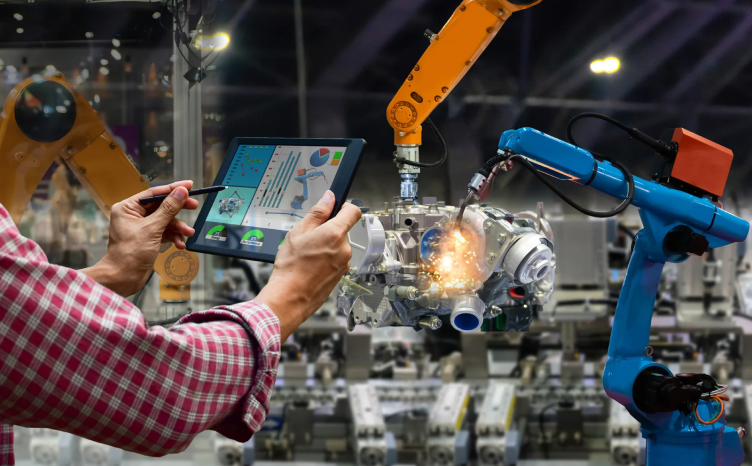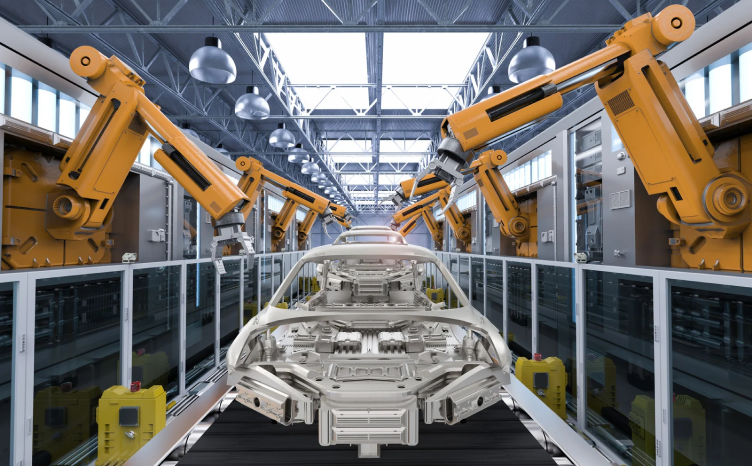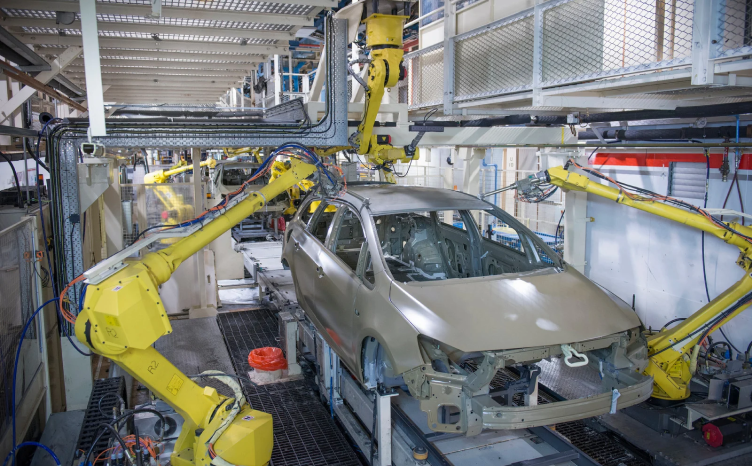Collaborative Robots: The Technology Revolutionizing Factory Floors
5 Mins Read
Published on: 21 May 2021
Last Updated on: 19 August 2024

toc impalement
Much is discussed when it comes to the future role of humans in the workplace. And predicting the future is never an exact science.
What we do know, however, is that we are charting paths through a Fourth Industrial Revolution. It is blurring the lines between physical, biological, and digital realms like never before. One example of this in action is in the manufacturing industry – where humans are working side-by-side with collaborative robots or ‘cobots’.
An Introduction to Collaborative Robots:

So, what do we mean by the term ‘collaborative robots’? The name speaks for itself in essence; robotic systems and machines that complement human activity on the factory floor. It becomes a shared workspace where man and machine join forces and get the job done.
Here, the interaction between the two ‘realms’ is both expected and encouraged. And it appears to be working well.
It is a complete step-change from the now-traditional concept of industrial robots. These heavy, bulky structures could often prove too dangerous for humans to work around due to their quick movements and significant weight. But cobots are bringing a new plug-and-play generation into the workplace. And they have the power to respond to their human co-workers if needs be too.
How Cobots are Benefiting the Industry:
The size and movement of cobots are a major plus for the manufacturing industry. First, there is the compact and lightweight exterior of these machines that allow for greater flexibility in how they are used. Second, advances in robotic components including gearmotors and sensors offer a noticeable uplift – whether that’s the accuracy of the activity or the length of operating time.
Accuracy is a very important point too. Unlike humans, cobots can take over the function of the most repetitive tasks. And they can perform those tasks on a continual basis for hours on end – always applying the same technique and pressure. All the human operator needs to do is install and program the cobot. That process, in itself, is a quick and easy one too.
For the industry as a whole, the overriding benefit is that cobots are enhancing productivity and streamlining tasks. So, from a cost perspective alone, they are an appealing proposition.
Will the Future Remain a Collaborative One?
Of course, there will always be that debate around the future of the workforce. With cobots, the most obvious question is whether it’ll continue to be a collaborative process. Or, in other words, will humans always have a place alongside machines? It’s natural to feel hesitant about a wider uptake of cobots in manufacturing. But the early prognosis is that collaboration will continue.
One report shows that idle time is reduced by 85% when humans work with cobots. So, from a business perspective, there is no rationale for removing the human touch yet. And there will be instances where a creative mind is best suited to a task or solution, which ensures that humans always have a role. As such, it very much seems the future of manufacturing is a shared one.
Best Collaborative Robots Manufacturers Of 2024

Collaborative Robots or Cobots are simply amazing. Cobots offer some of the most notable benefits to its users. However, cobots are products, and you would want to source your product from the best in class, especially if you are sourcing it for business purposes.
Therefore, here are some of the most prominent and big-shot names in the industry that manufacture collaborative robots. However, this is an informative list and must be treated similarly.
Standard Bots
Standard Bots started out in the US and soon became one of the prominent names in the Collaborative robots industry. Currently, Standard Bots is seen as one of the innovators who is driving the industry forward.
The company is specifically aimed at creating collaborative robotics solutions that are affordable and accessible. The company’s pride and joy are the RO1 and Six-Axis Collaborative Robot Arm.
ABB Robotics
Like Standard Bots, ABB Robotics had humble beginnings. The company started out in Switzerland and soon took over the globe. Currently, ABB is one of the leading innovators in the industry.
The brand is known for its robust array of products that range from simple to multi-tiered. As a result, the company has become one of the most sought-after brands in recent times.
Fanuc America
Fanuc is apparently one of Japan’s most advanced and first automation brands. Later on, the brand managed to make ties with America and gave birth to Fanuc America.
Fanuc America is lauded as one of the largest robotics companies in the world. The brand has managed to break newer horizons with its revolutionary products. The CR series of robots from Fanuc America is lightweight and easily programmable. As a result, many companies have opted for the series.
Kawasaki Robotics
Fanuc is not the only brand that made its way out of Japan. Another very prominent robotics brand that came out of Japan is Kawasaki. Kawasaki started out its journey as a motorcycle brand. Soon enough, the brand expanded its horizon.
Kawasaki is currently looking to expand its repertoire by specializing in space automation. This is an entirely new horizon that no other brands are looking to overcome. This sets Kawasaki apart from different brands.
Rethink Robotics
Germans have always been some of the most advanced civilizations when it comes to automation and machine building. Therefore, it is understandable why a German company like Rethink Robotics would end up on this list.
Rethink Robotics is focused on creating intelligent robots. Robots that are capable of filling multiple roles with ease and comfort. As a result, deep learning features can be observed in most of their products. Baxter and Sawyer are two of the most essential products from their lineup. Not only that, but these products are also some of their best-selling products.
The Final Thought
In summation, collaborative robots would eventually take over the production lineup slowly and gradually. This could usher in a newer dawn that can change the very way the production lineup functions. Which in turn can change the business landscape.
Therefore, collaborative robots are the future. Keep following this page for more such content on robotics and automation. Thank you!


















Comments Are Closed For This Article